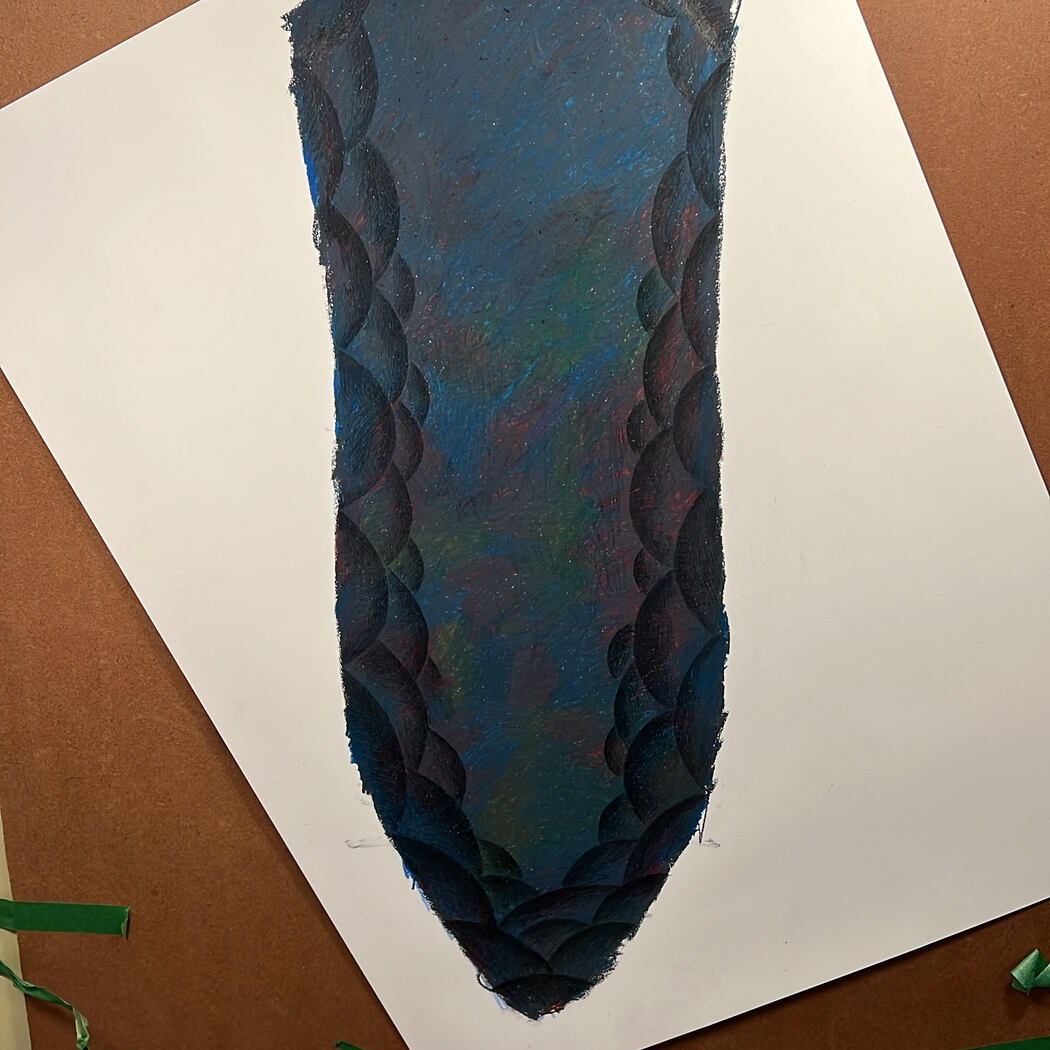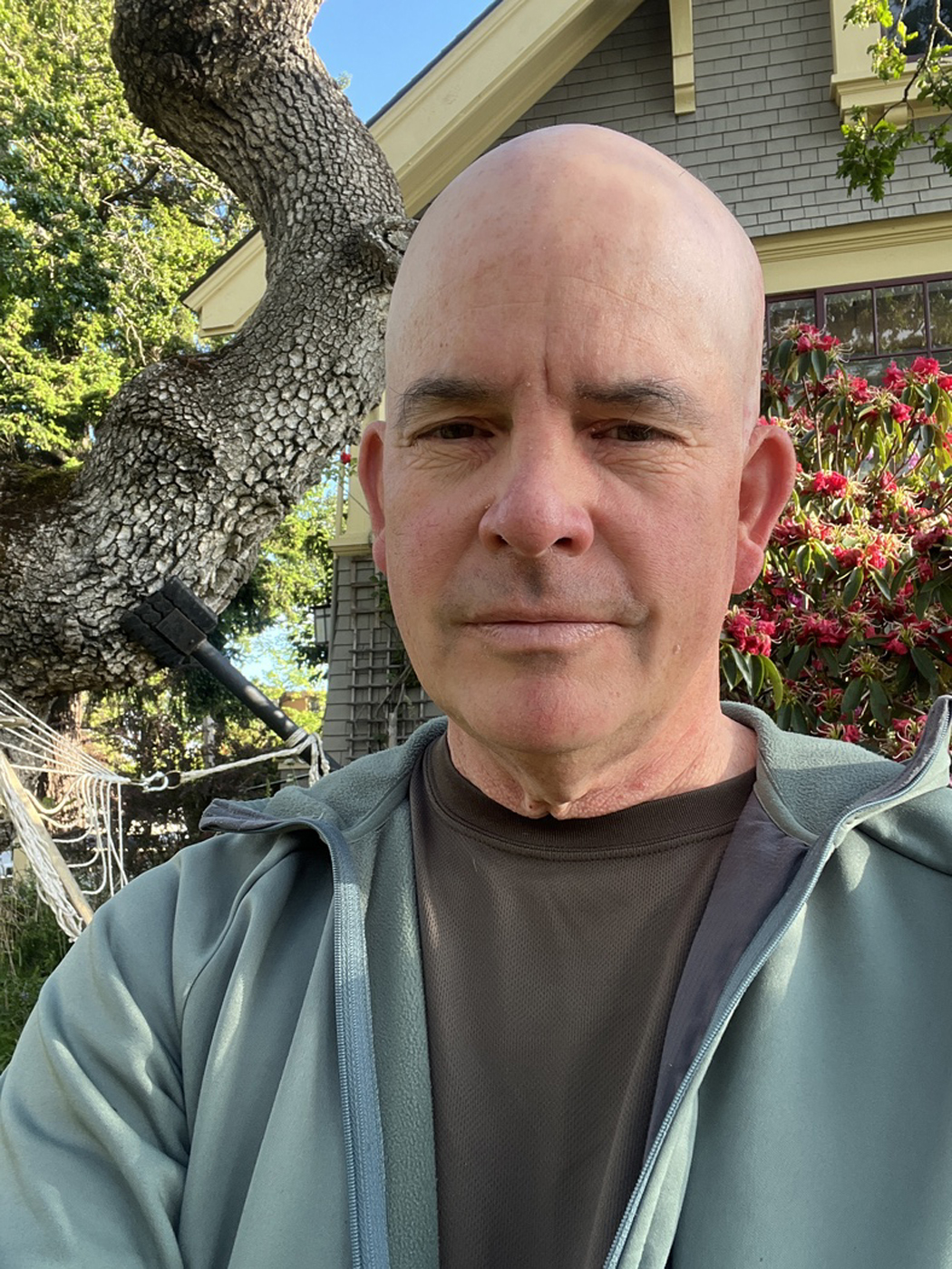Gordon Doucette
You mention replacing your mason’s hammer with an artist’s pencil. Can you tell us more about this transition from manual labor to artistic expression?
I think in each case I was making art or being led by that sensibility. In the trade work I started to feel this loss at the end of each project that my message was not getting across, so it was a shifting of the arena or client to better convey my message. I also think it was this dragon I had to slay. This notion of denial I carried around of wanting to make art or to be an artist. The other facet I thought about was my daughter who is a painter and aspiring artist. I knew words were difficult between us and I wanted to encourage and inspire her. The best way I thought was to do it myself lead by example in a way.
Your process begins with a “deliberately accidental” line. How do you define that balance between chance and intention in your work?
I think it begins with speed, at a certain velocity a side of my thinking gives up, maybe the controlling side or the side that wants safety. There is then an altering of my thinking. At some moments it’s like sticking my finger in a socket not in a painful way but this excited elation, particularly in ‘Redeemer’. Then there’s a reality check a need to connect. I use light and dark shading to create depth that the eye is comfortable with. That’s the certainty. At a point it’s like a pane of glass shattering, I think about trees pushing through the layer from earth to sky, life in a nut shell. There’s a sense of infinity too around the image in the whiteness of the paper I like.
What draws you to the theme of the “origins of creativity”?
I think was it just a continuation of work I was doing in University. I was interested in these cave paintings at Lascaux and Altamira, one in particular where the image follows the shape of the rock face. This seems to me a point in time when the author of this had the image in their minds eye that it formed in the individual’s consciousness and then proceeded to enhance and form the image. The beginnings of art possibly.

How does your background as a mason influence your artistic vision and materials today?
Work I was doing at University was quite feeble and much of it just fell apart, so the masonry I think was an evolutionary fixing of that problem. Further to your question though I saw a connection with a certain artists paintings and the stonework in the sense there was no focal point, the work in it’s entirety was the focal point. So, the drawings are a continuation of strictly object only no background. I’m making a series of sculptures rockets and bombs built with rocks and mortar ala trade work style titled “Secrets of the Universe” so that’s a direct influence.
Do you see your work as a continuation of ancient creative impulses?
Yes, absolutely. Stone masonry is such an ancient way of building. The physical practice seems to open a dialogue where with these very old structures you begin to see how they were thinking and the solutions of how to build were similar.
What role does physical effort or discipline play in your current practice, compared to your previous profession?
It’s definitely easier on my back. I always seem to push too hard with the pencil and I’ve snapped off alot of lead nibs. So, I’m always trying to be gentler and take a softer approach.
What message or feeling do you hope the viewer takes away from your compositions?
I hope the viewer gets engaged. That the image can hold their attention for more than the need to scroll to the next one. That I’ve conveyed something interesting to look at.


Leave a Reply